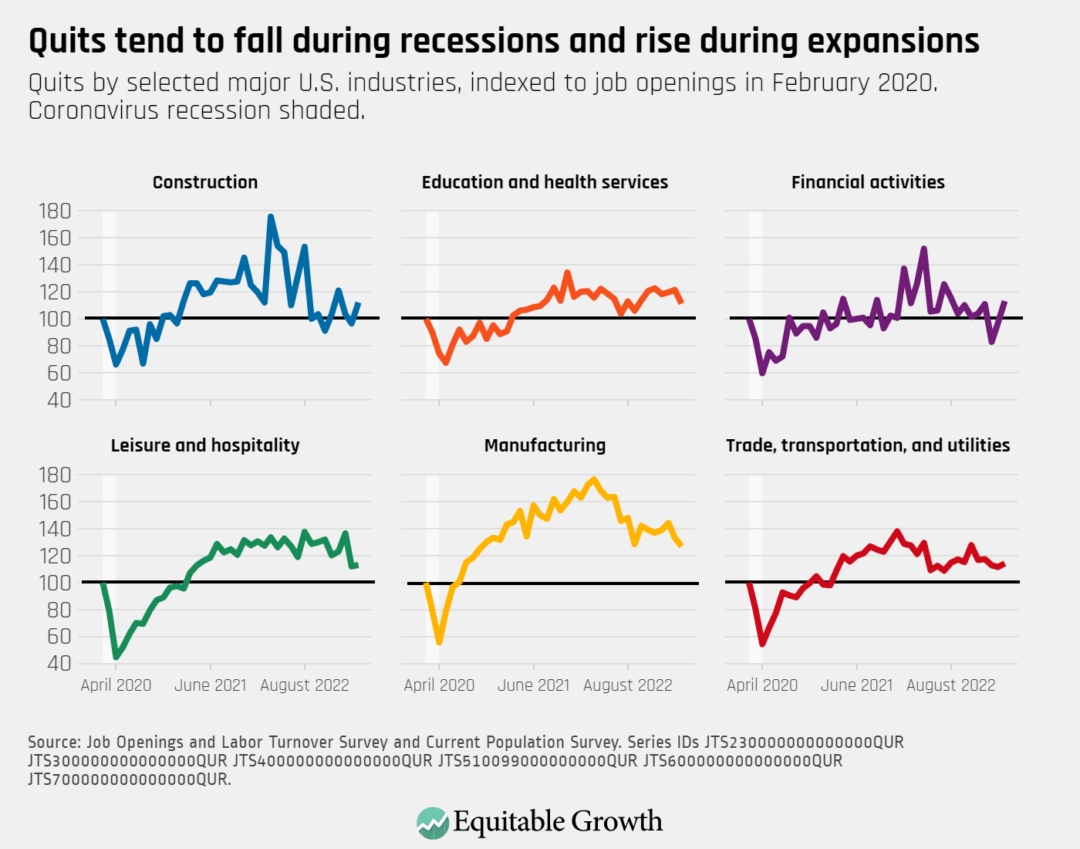JOLTS Day Graphs: April 2023 Edition
The quits rate fell from 2.5 percent in March to 2.4 percent in April as 3.8 million workers voluntarily left their jobs last month.
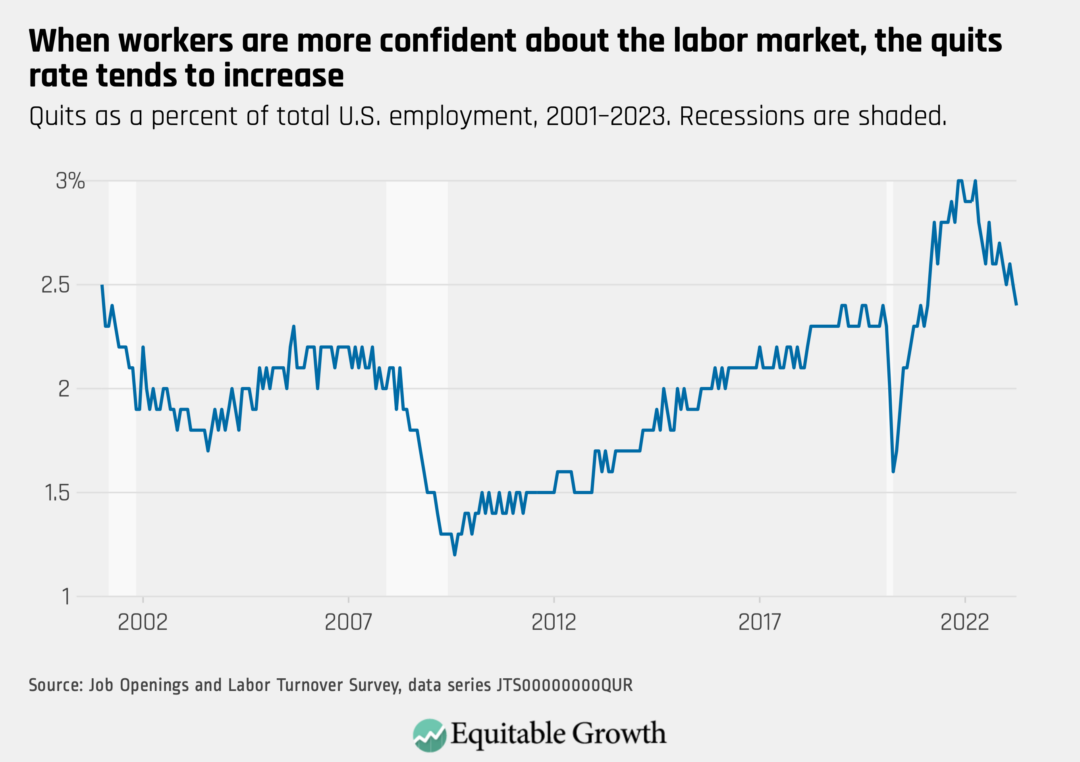
The vacancy yield, a measure that captures how easy it is for employers to fill open positions, fell in April as job openings increased to 10.1 million and hires stayed roughly the same at 6.1 million.
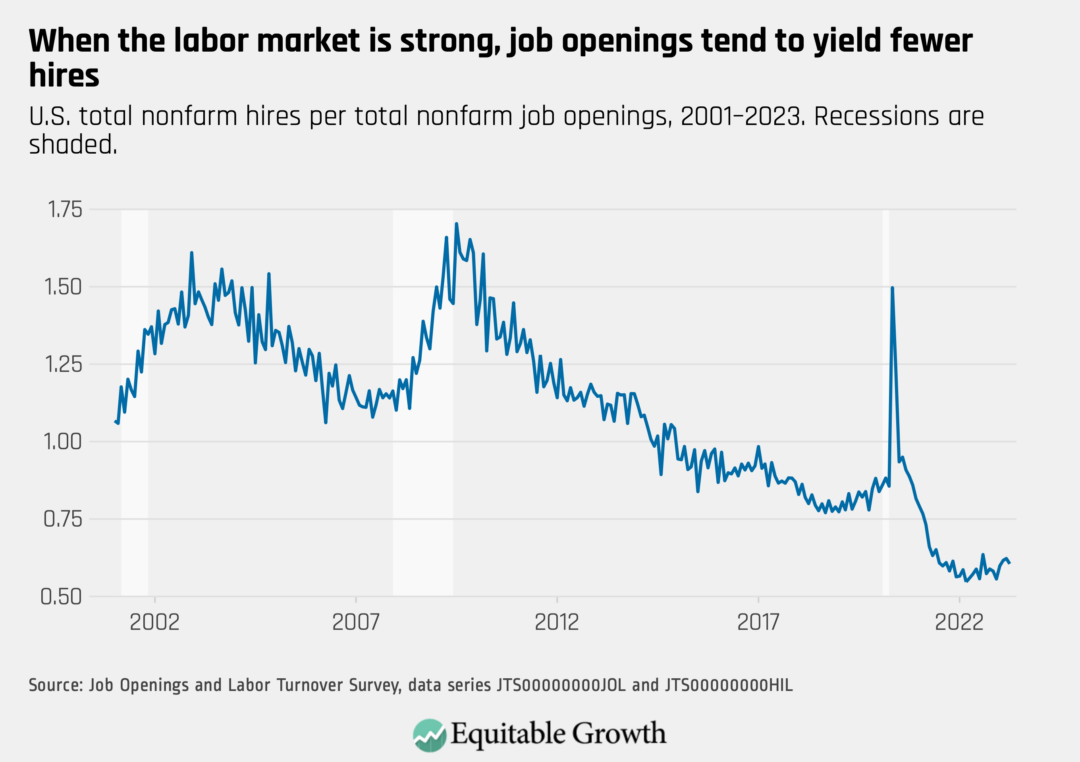
The ratio of unemployed workers to job openings decreased slightly in April, as the number of unemployed workers fell and the number of job openings increased.
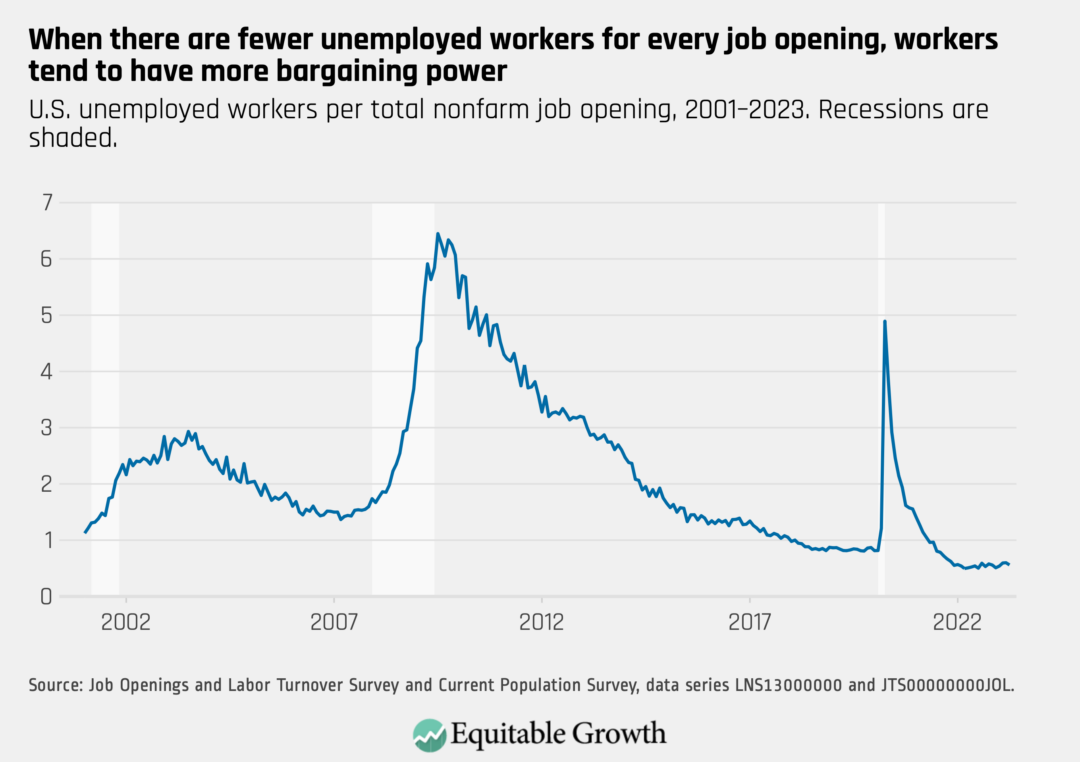
The Beveridge Curve, which typically captures that there tends to be relatively more open positions when the labor market is strong, moved up and to the left in April as the unemployment rate declined and the job openings rate increased.
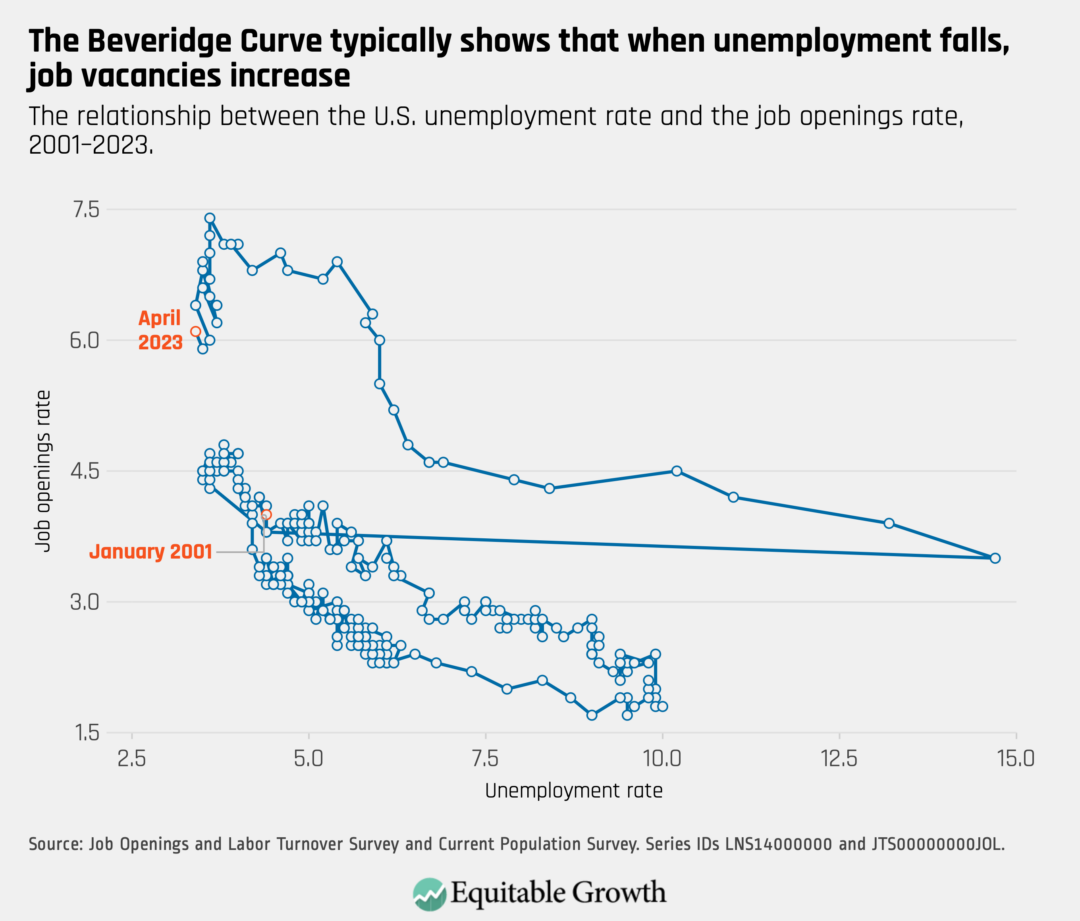
The overall number of quits fell slightly in April, including in industries such as manufacturing and education and health services. But quits rose in industries such as construction and financial activities.
